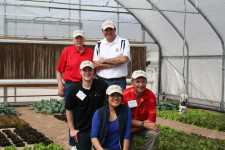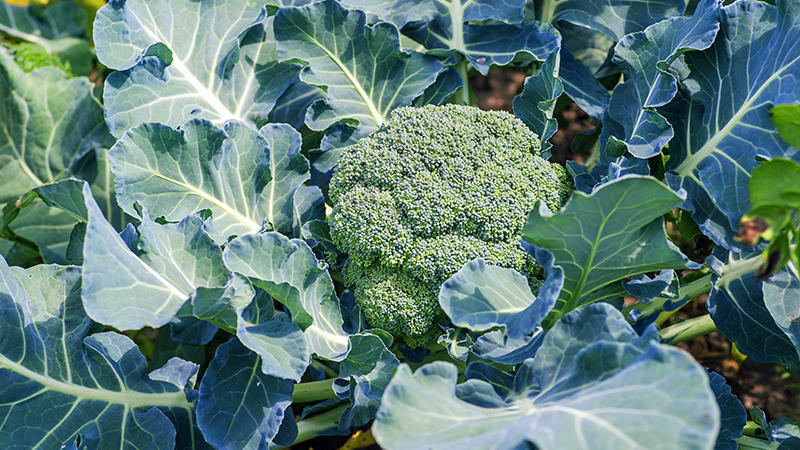“Greener” Growing Techniques In The Greenhouse


A greenhouse that incurs lower costs and is “greener” than the average greenhouse is what the researchers at the Controlled Environment Agriculture Center (CEAC) at the University of Arizona are hoping to create.
At the annual Greenhouse Crop Production & Design Short Course organized by the University of Arizona, which was held in April in Tucson, discussions focused on a growing medium and a new fertilizer. Specifically, it was the use of sand as a growing medium and its ability to filter water and the addition of an organic fertilizer based on fruit and vegetable waste that impressed attendees. The use of solar energy installations to meet greenhouse power needs also was of interest.
Solar Energy To Power Greenhouse
An overall goal, according to Murat Kacira, an expert in agricultural engineering at the University of Arizona, is to “create a lower cost greenhouse system integrated with an alternative energy power generator [solar energy] to have an off-the-grid food production unit.”
He also mentioned the benefits of giving people in remote locations access to these types of growing systems as they have limited access to energy, water, and chemical fertilizers.
Trialing A New Fertilizer
As mentioned, part of this research project included testing a new organic fertilizer. “This year we had a company working with us, WISErg, to make this green system even greener,” Kacira explained. “[WISErg] has a food digester, and from using food waste from different sources, [the company] generated an organic liquid fertilizer. We are going through a lettuce trial with their organic liquid fertilizer and comparing it to a traditional fertilizer to see if there are benefits or advantages of the organic liquid fertilizer.”
According to EPA, the U.S. wastes more than 34 million tons of food each year. With the intention of using this food waste as an agricultural input, WISErg created a patented system that allows the waste to be used, converting it to an organic fertilizer before the point at which it deteriorates and loses its nutritive value. By doing this, the company was able to create a system that reuses and converts nutrients that can be used in a fertigation system.
Tim Robie, an engineer from WISErg, explains: “We provide technology that sits at the grocery store. We take all compostable food waste from grocery stores — not just fruits and vegetables — and process everything in our harvester units. We are then able to bring back that liquid material to our central facilities where we refine it to meet the pathogen requirements and marketable levels. In the end, we have a liquid product that has no solids and no gunky material that’s common in other organic liquids.”
Robie affirmed that the product has already performed well in open fields in the Pacific Northwest, so it will be a natural next step for the company to expand their reach into greenhouse technology.
Greenhouse Performance
Called WISErganic 3-0-1, this liquid fertilizer was the primary source in the fertigation system installed by the university. The fertilizer is being reviewed by OMRI (Organic Materials Review Institute) but received approval for use in organic production by the Washington State Department of Agriculture’s Organic Program in 2012.
While showing rows of different lettuce, kale, and broccoli varieties during the demonstration, Robie explained the process. “We started this project in January, with Dr. [Merle] Jensen who is analyzing how many parts per million of every micro and macro nutrient we need, and he’s taken our material, expanded on that, and turned it into a complete two-part nutrient formula that has the optimum levels of all plant essential nutrients.”
The first crop was removed at five weeks, and more than 600 heads of lettuce plus broccoli and kale plants had been produced. “The surprising thing about the harvest at five weeks was that Tucson had some unusually cold weather this spring and one would’ve expected a setback in the unheated greenhouse, which we didn’t [have],” said Robie.
Sand As A Filter
Jensen, an expert in fruit and vegetable production in protected environments at the University of Arizona, explained how sand used as a growing medium allows growers to naturally filter water from fertigation systems to the point where it can become almost as pure as distilled water. It’s a very simple system, he said.
“We planted a successful crop of tomatoes, but now we decided to look into lettuce,” Jensen explained. “The interesting thing is that we are now able to take the food waste along with other salts that are OMRI approved and are able to irrigate with the WISErg nutrient solution.”
Some organic nutrients tend to clog irrigation systems where this one does not, he added.
Jensen estimated that some of the lettuce varieties will weigh as much as 300-plus grams. He attributed the overall quality of the crop to the nutrients that are being added.
While showcasing the lettuces during the short course, Jensen said that this production technique using sand as a growing medium can be done anywhere in the world. “And it will probably be some of the nicest organic lettuce you’ll see in the supermarket,” he added. “We’ve been able to make it simple, easy, and very affordable.”
According to Robie, other vegetable crops are currently being trialed in the greenhouse. Results are expected toward the end of the year.










